
Justin Lin, the director behind multiple Fast & Furious movies, is set to helm the video game adaptation
The post The <i>Helldivers</i> Movie Just Found The Perfect Director appeared first on Kotaku.


Justin Lin, the director behind multiple Fast & Furious movies, is set to helm the video game adaptation
The post The <i>Helldivers</i> Movie Just Found The Perfect Director appeared first on Kotaku.
FluxPose wants to be the new 6DoF VR body tracking system of choice, and its Kickstarter campaign has already raised over $2 million.
With Valve itself abandoning its “Lighthouse” SteamVR Tracking system in favor of inside-out computer vision in Steam Frame, the future of VR body tracking is in flux (no pun intended). Computer vision has made setting up VR fast, easy, and portable, all at a lower cost, but cameras on a headset have only a partial view of your body.
Further, like all optical systems, Lighthouse tracking is subject to occlusion. With the standard two base stations, there will be angles at which your tracked objects are blocked. To mitigate this, some enthusiasts add a third or even fourth base station. Lighthouse is also heavily affected by any reflective surfaces in the room, especially mirrors, which cause tracking issues.
0:00
FluxPose in VRChat.
Over the weekend, Spanish startup FluxPose launched a Kickstarter campaign for what it calls “the first affordable, truly portable, occlusion-free tracking solution with absolute positioning”. FluxPose uses electromagnetic tracking, with trackers that sense the magnetic field generated by a base station.
We’ve seen electromagnetic tracking systems in VR before. Razer Hydra, the first widely used 6DoF VR controllers, used it for a small tracking volume limited by the 4-foot cable each controller was connected to the base station with. And in 2013, the company that built the tech behind Hydra launched a Kickstarter for a tracking system called STEM, with many of the same core promises of FluxPose. But in 2018 STEM was canceled, with backers refunded.
0:00
Through-the-lens demo of FluxPose.
A key reason that STEM failed, why Razer Hydra had a short tether, and the core difference of FluxPose, comes down to the nature of magnetic fields and where you put the base station. With Hydra and STEM it sat on your desk, and because magnetic fields decay with the cube of the distance, beyond a few feet they would deliver jittery and inaccurate poses.
With FluxPose, the base station (which it calls the beacon) is attached to your hip. This effectively creates a portable occlusion-free tracking sphere around your body, with a radius of just over 5 feet, that, according to the startup, can support an “unlimited” number of trackers within it. It’s a clever solution to the electromagnetic distance problem, with the tradeoff that it requires wearing an additional device.
As with every VR tracking system, FluxPose also heavily relies on feeding the data from the IMU on the trackers, the tiny chip which contains the accelerometer and gyroscope, into a sensor fusion model.
FluxPose claims a real-use accuracy of less than 5mm, compared to the less than 2mm of SteamVR Lighthouse, with an update rate of between 50Hz and 300Hz depending on the power mode.
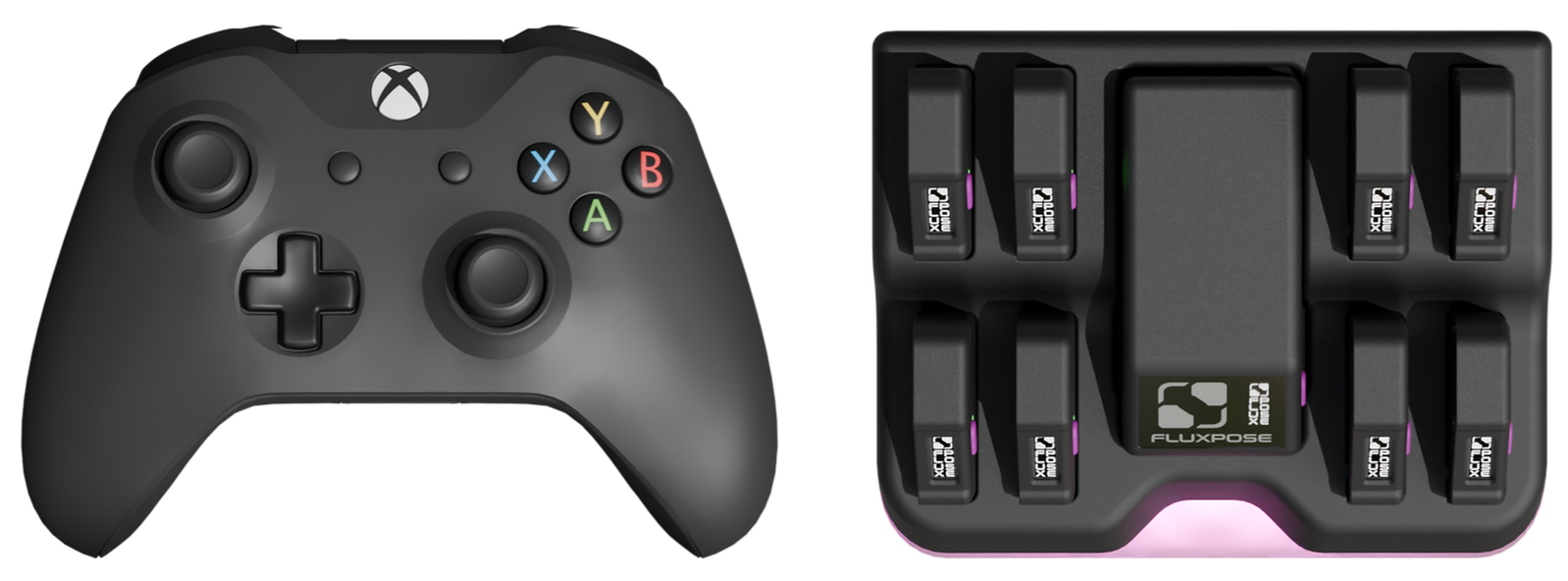

On the Normal power mode, the beacon’s battery should last around 12 hours. There’s also a Low power mode for “standing, sitting or laying” which should last 24 hours, and a Performance mode for tracking controllers or gloves, in which the beacon should last 6 hours.
The trackers themselves, meanwhile, weigh just 15 grams and last for 24 hours, FluxPose claims. That’s just one-fifth of the weight of a HTC Vive Tracker. And remarkably, despite that low weight, they have a tiny monochrome OLED screen for displaying status and a haptic feedback actuator.

You attach one of the trackers to your headset, with a per-headset adapter mount, while the others attach to the parts of your body you want to track. Mounts are available for Quest 2 and newer, Pico 4 and 4 Ultra, Samsung Galaxy XR, Valve Index, both Bigscreen Beyond generations. And FluxPose says it will have a mount for Steam Frame too.
Because of the headset-attached reference tracker, FluxPose claims its tracking system doesn’t require any calibration, and “never” drifts. The tradeoff is adding 15 grams of weight to your headset.
Both the beacon and trackers charge on the included dock, which also acts as the wireless data dongle, delivering the tracking poses to SteamVR on your PC via USB-C. From a PC’s USB port it should recharge everything within 3 hours, while on a PD charger this can drop to 1.5 hours.

On Kickstarter, you can pledge for three kits: Lite, Core, and Pro. Lite is priced at €339 before tax and comes with 3 trackers, Core at €479 with 5 trackers, and Pro at €689 with 8 trackers. Additional addons like straps are available separately.
FluxPose says it has already built 300 devices for early testers, and launched the Kickstarter to progress to full-scale production. It intends to start shipping the first “early bird” units in August 2026, and for most backers to receive their units in October. After the Kickstarter, prices will increase.
As with all crowdfunding campaigns, we must warn you that a Kickstarter pledge is not a preorder. There is no guarantee you will receive anything at all, and the company has no legal obligation to provide you with a refund if it doesn’t deliver.

Heated Rivalry is a yaoi hockey romance so hot it could melt the rink’s ice
The post This Sexy TV Series Makes One Of The Straightest Sports Gay appeared first on Kotaku.

Don’t shoot! I have fruit!
The post Extraction Shooter Player Puts Down Guns And Starts Selling Fruit Instead appeared first on Kotaku.

Walmart and Amazon both took $50 off for Cyber Monday
The post The Switch 2 Mario Kart World Bundle Just Got A Surprise Discount appeared first on Kotaku.
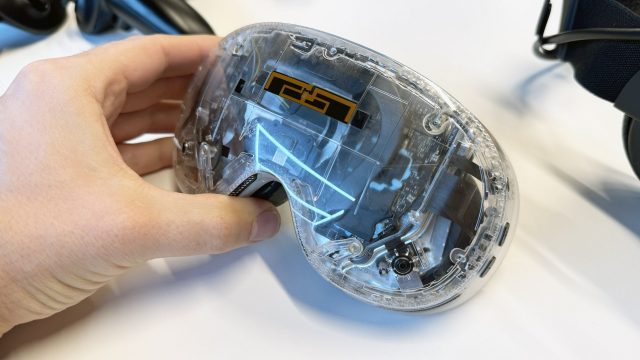
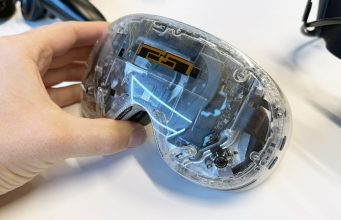
In March 2019, Valve surprised the VR industry with the tease of ‘Index’, its first self-made VR headset. Index would go on to launch later in May 2019 and be seen as the enthusiasts’ choice in PC VR headsets for many years to come. Unbeknownst to the world, by the time Index was released, the company had already been working on aspects of what would become its second VR headset, Steam Frame. But Frame’s development wouldn’t conclude for another six years.
During a visit to Valve’s headquarters, engineers who worked on both Index and Frame told me that development of some of Frame’s core aspects began at least as far back as 2019, even before Index was revealed to the world.
“We actually started this in the middle of [developing] Index. Yeah, so Index shipped in [early 2019]. Yeah, we were we were already starting to work on the very beginnings of [Frame] a little before that.”
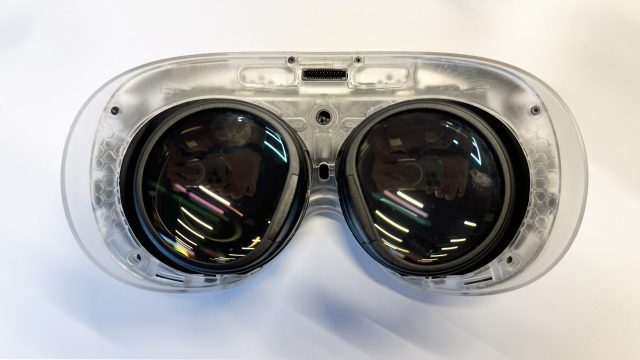
Specifically, the team recalls that the headset’s pancake optics were already in development before Index shipped.
The optics were all designed here [at Valve]. We started it, like I said, right around about the middle of [building Index], and then after we shipped Index we focused really hard on [the new optics]. […]
I think the challenge [with great optics] has always been about how can we do it in a way that’s affordable and not heavy with glass elements and all that stuff.
So it was a really hard, and I think we’ve definitely benefited from the industry wanting to make pancake optics work because there was a lot of work that needed to go into making these manufacturable.
To really understand how it would take another six years before Frame’s announcement, it’s important to understand how work at Valve differs from other companies. While many companies create goals to release specific products on specific timelines, Valve has a much more iterative, ‘release it when it’s done’ mentality. During my visit, a member of the Frame development team explained:
[An] interesting thing about our development process and timeline is we try to work on hardware [at Valve] the same way that we work on software.
We have game teams that have learned how to use play testing really well and how to iterate really well and how to form cross-disciplinary teams that are really productive at just finding the things that are really fun and valuable.
So a lot of the processes [that led to Frame] started before we even shipped Index; we didn’t have an end goal in mind. We’re just like, ‘we think this [idea] is gonna be good. Let’s test it.’ […]
And we just kind of kept going and testing it with people, play-testing our ideas, trying different things and different combinations until […] at some point we’re like, ‘okay, this is doing everything we think that it needs to do. This will make our customers happy. This is a great companion to Steam.’ […]
And only when we reach that point—when we’re confident that we’ve tested our goals and our assumptions—that we’re like, ‘okay, let’s get on the shipping timeline.’
We really only wanna ship something when it’s ready.
If you’ve ever heard someone mention ‘Valve Time’, this is it in a nutshell.
In speaking to the Frame team, I got the sense that most of them were serious VR users themselves, and the features and design of Frame were driven heavily by what they themselves—not some abstract ‘addressable audience’—wanted in a headset. They wanted the headset to be able to play their entire Steam library, they wanted it to be portable and comfortable, and they wanted it to be moddable.
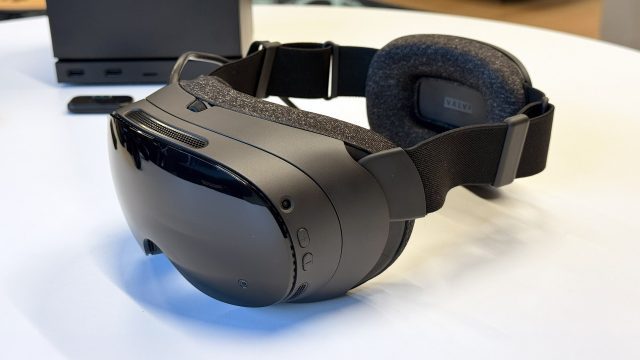
I asked if their goal with Steam Frame was to make a standalone headset from the outset. A member of the team told me they were more focused on the user experience they wanted, which ultimately led them to the standalone form-factor to reduce the friction of setup.
I don’t think we necessarily said, ‘let’s make a standalone device.’ I think it really came down to, we all just wanted to play the things we wanted to play wherever we wanted to play.
And whether that’s streaming or whether that’s running stuff locally, it was really about the experience we were after and like what made this something [we] wanted to use. […]
We’re really excited about what [the power of a full PC] provides, but we also want to not have to set up things [like tracking beacons] and we want to be able to pause [our games] and walk away [to easily resume them later].
Now Frame is finally out in the open. Will it be worth the wait? We’ll find out once it ships in early 2026.
The post Valve Says Steam Frame Development Started Even Before Index Was Released appeared first on Road to VR.

Please let it be about Keanu Reeves’ Shadow
The post A <em>Sonic</em> Spin-Off Movie Is Officially In The Works, Coming In 2028 appeared first on Kotaku.

Bell Bearing Hunter’s placement is raising questions
The post <i>Nightreign</i>‘s Deadliest Field Boss Is Not Who I Expected appeared first on Kotaku.


As we celebrate our tenth anniversary, we at Pimax are excited to introduce SuperOpen, a long-term initiative that opens our technology to the global community and invites developers, creators, and enthusiasts to help shape the next era of virtual reality.
Industry Direct by Pimax
Industry Direct is our program for sponsors who want to speak directly to the Road to VR newsletter audience. Industry Direct posts are written by sponsors with no involvement from the Road to VR editorial team and do not appear in our front-page editorial feed. Industry Direct sponsors help make Road to VR possible.
SuperOpen is not a new product and it is not a marketing slogan. It is a commitment to openness and a belief that VR hardware should evolve in a more flexible and sustainable way. Over the past decade, the VR industry has made significant progress, but it has also been limited by closed ecosystems and hardware that becomes outdated too quickly. We believe it is time for a different approach.
For years, VR users have been asked to replace entire headsets every time a major improvement arrives. Optics change, displays improve, cooling advances, and yet the entire device must be replaced. This is wasteful and does not reflect how modern technology should grow.
Crystal Super was built on a different idea. Instead of a device that stays fixed, it is a platform that can evolve. Its optical engine, front shell, facial interface, and other modules can be changed as new innovations appear. This makes the headset something you can refine, not something you discard.
Now that Crystal Super is widely available and our production is stable across the world, this is the right moment to open the platform and bring the community into the process.
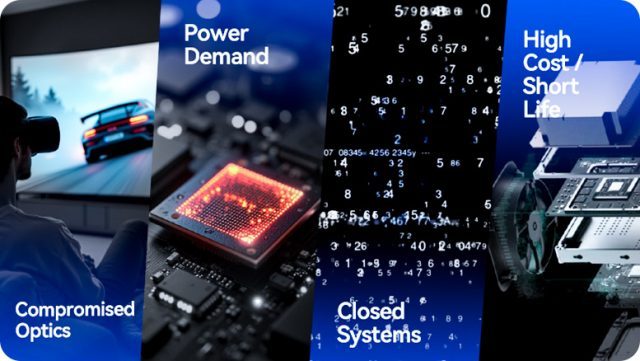 Opening Our Technology to the World
Opening Our Technology to the WorldPimax has always believed that true innovation comes from sharing. SuperOpen marks the first release of our development resources, and we’ll continue to update and expand them over time.
Developers can now access:
These resources are available to help anyone build new ideas directly on top of the Crystal Super platform. This is only the starting point. We will continue to expand the SDKs based on what the community builds.
As our founder Robin Weng says: “Innovation grows faster when people build together.”
SuperOpen also gives us the chance to explore bold new module concepts hand in hand with the community. We are currently evaluating several experimental ideas that show how far an open headset platform can go:
Some of these concepts are early studies, and others are already in engineering testing, but all of them will grow through community involvement. Through SuperOpen, we will also provide Crystal Super units, HDKs, and SDKs to selected developers who want to explore these concepts with us.
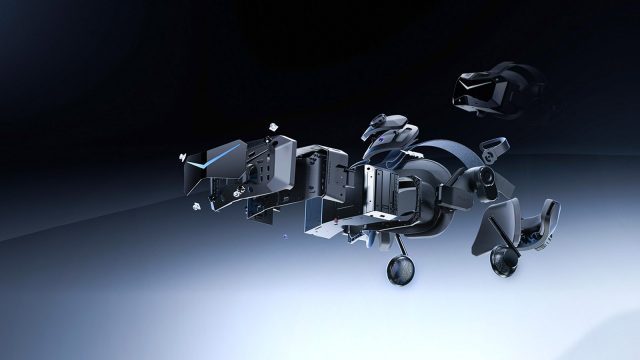 Building a Living VR Ecosystem
Building a Living VR EcosystemSuperOpen marks an important milestone for our tenth year. More than anything, it represents a shift from building product generations to supporting a platform that keeps evolving. When hardware and software grow together with the community, we extend product life, reduce waste, and encourage meaningful innovation.
To support this, we have opened: The SuperOpen Developer Discord
Once inside, developers and creators can share ideas, collaborate on modules, receive feedback from Pimax engineering teams, and access support across development, supply chain, and promotion. SuperOpen is not only a place to discuss ideas. It is a space designed to help those ideas turn into real hardware and real experiences.
The launch of Crystal Super is not the finish line for us. It is the beginning of a platform that will continue to grow year after year. SuperOpen reflects our belief that openness and collaboration are the most powerful forces in VR today.
To everyone who has supported Pimax over the past decade, and to everyone who will join us now, thank you. We invite developers, creators, engineers, and VR enthusiasts to help define what the next ten years of virtual reality will look like.
Let us shape the future of VR together.
The post [Industry Direct] Pimax Launches ‘SuperOpen’ to Empower Developers and Shape the Next Era of VR appeared first on Road to VR.

Assassin’s Creed Shadows looks phenomenal and (mostly) runs well on the portable console hybrid
The post Ubisoft’s Becoming The King Of Switch 2 Ports appeared first on Kotaku.

Odds are you’ve seen some of your favorite media set to a fake man shouting about Charlie Kirk
The post A Terrible AI Song About Charlie Kirk Is Infecting The Internet appeared first on Kotaku.

The extraction shooter’s combination of a compelling loop and existential danger has me in its deadly grips
The post <i>ARC Raiders</i> Is So Good I Keep Playing No Matter How Much I Suck appeared first on Kotaku.

A top-notch retro brawler that feels a bit content light
The post <i>Marvel Cosmic Invasion</i>: The <i>Kotaku</i> Review appeared first on Kotaku.
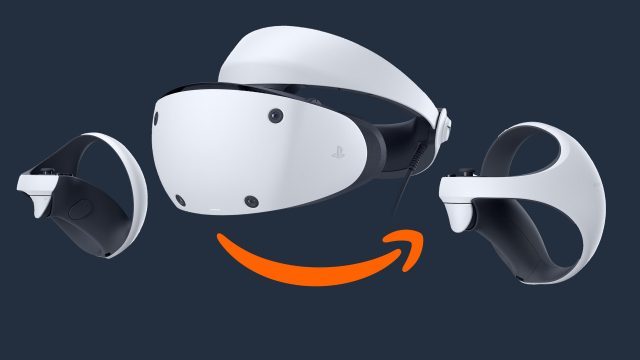

PSVR 2’s Black Friday sale is here to stay until December 19th. The headset has dropped to its lowest price yet for the 2025 holiday deal season.
The PSVR 2 Horizon bundle is usually $400, making this deal a 25% discount.
This deal will be available until December 19th.
The official PlayStation Store is running a Black Friday game sale with up to 75% off PSVR 2 games.
Our number one pick from the list is Metro Awakening (2024) which is being sold for just $24 (a 40% discount).
The post $300 PSVR 2 Black Friday Sale Runs Until December 19th appeared first on Road to VR.

Amazon just took $81 off this iconic LEGO Icons PAC-Man arcade building set, but the discount ends soon.
The post LEGO PAC-Man Arcade Now Cheaper Than Its Planned Cyber Monday Price With Stock Nearly Gone appeared first on Kotaku.

Why is the Netflix show plugging in an NES if it’s not going to use footage from it?
The post <em>Stranger Things</em> Season 5 Made A Retro Gaming Mistake Most People Would Never Notice appeared first on Kotaku.

It offers a bright screen, plus the battery life lasts over 12 hours on a single charge.
The post Forget Pricey iPad, Lenovo Tab One Falls to an All-Time Low and Now Priced Like a No-Name Android Tablet appeared first on Kotaku.
Final Fury gives the VR arcade fighter new attacks, more moves, and ranked events in today’s Tides of Vygor update.
Following May’s early access launch, Kluge Interactive (Synth Riders) is now releasing what it calls the “biggest update yet” for Final Fury. The Tides of Vygor update now allows you to use dive kicks and uppercuts, alongside a “full set of Vygor-powered special attacks” that the studio states will open up new defensive and combo options.
Tides of Vygor also introduces ‘Ranked Events,’ a series of weekend tournaments that deliver new cosmetics and avatar rewards for competitors. Bonus prizes will also be awarded to top performers. Kluge states December’s lineup includes the titular festival and a festive-themed showdown, Festive Fury, to mark the year’s end.
Today’s update also joins news that Final Fury is now part of the Horizon+ Games Catalog on Quest, a rotating selection of games available to all subscribers. Meta also offers two monthly games that you can keep for as long as you remain subscribed, with December’s monthly Horizon+ games being Tactical Assault VR and Smash Drums.
We enjoyed Final Fury in our early access hands-on in May. Though we considered the launch content to be rather slim, we believed it offered “a strong foundation that is approachable to newcomers while having the same kind of mechanical depth that will appeal to traditional fighting game players.”
Final Fury is out now in early access on Steam and the Meta Quest platform.
 UploadVRAlan Wen
UploadVRAlan Wen

Ready to do some bounty hunting?
The post <i>Arc Raiders</i> Fans Have A New Tool For Revenge Against Assholes appeared first on Kotaku.

Save $20 and grab a new DualSense Wireless Controller while it’s within a dollar of its all-time lowest price.
The post Sony Breaks Its Controller Price History on the PlayStation DualSense, Dropping It to a Record Low to Close Out Cyber Monday appeared first on Kotaku.